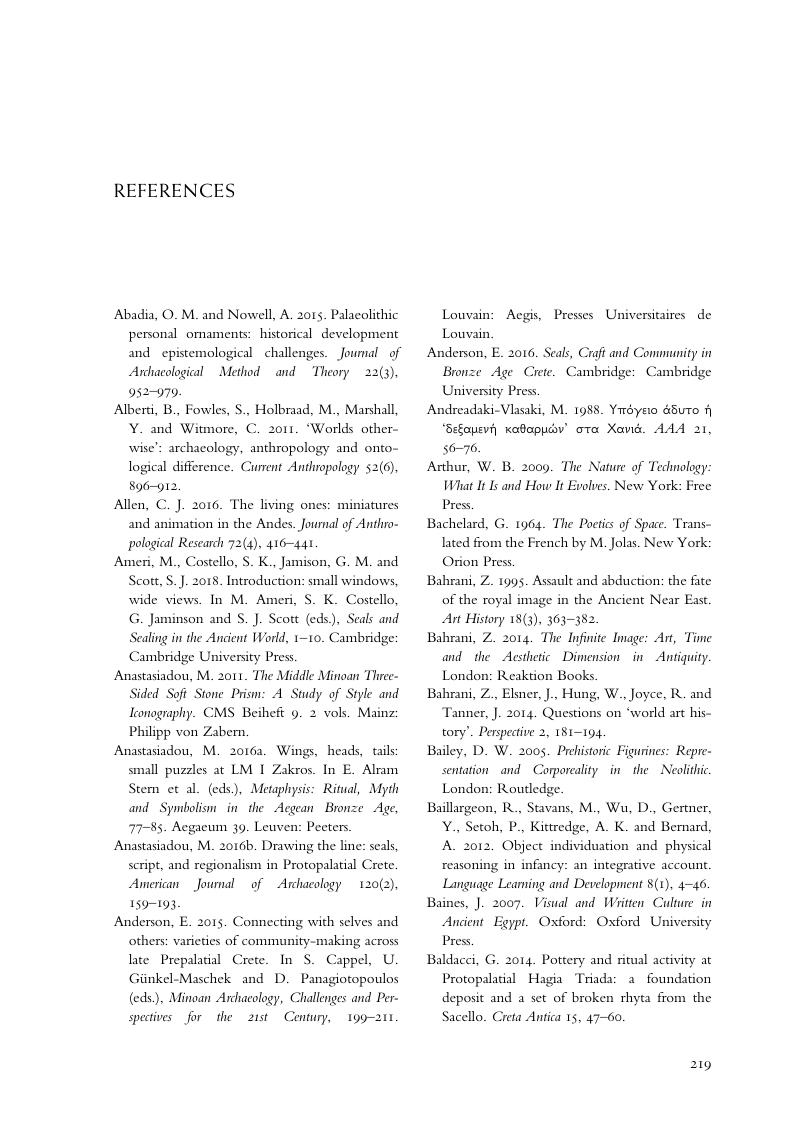Book contents
- Aegean Bronze Age Art
- Aegean Bronze Age Art
- Copyright page
- Contents
- Figures
- Acknowledgements
- Chronological Table
- One Theorising ‘Meaning in the Making’
- Two Modelling
- Three Imprinting
- Four Combining
- Five Containing
- Six Fragmenting
- Seven Meaning on the Move? Mobility and Creativity
- Notes
- References
- Index
- References
References
Published online by Cambridge University Press: 18 April 2020
- Aegean Bronze Age Art
- Aegean Bronze Age Art
- Copyright page
- Contents
- Figures
- Acknowledgements
- Chronological Table
- One Theorising ‘Meaning in the Making’
- Two Modelling
- Three Imprinting
- Four Combining
- Five Containing
- Six Fragmenting
- Seven Meaning on the Move? Mobility and Creativity
- Notes
- References
- Index
- References
Summary

- Type
- Chapter
- Information
- Aegean Bronze Age ArtMeaning in the Making, pp. 219 - 242Publisher: Cambridge University PressPrint publication year: 2020

